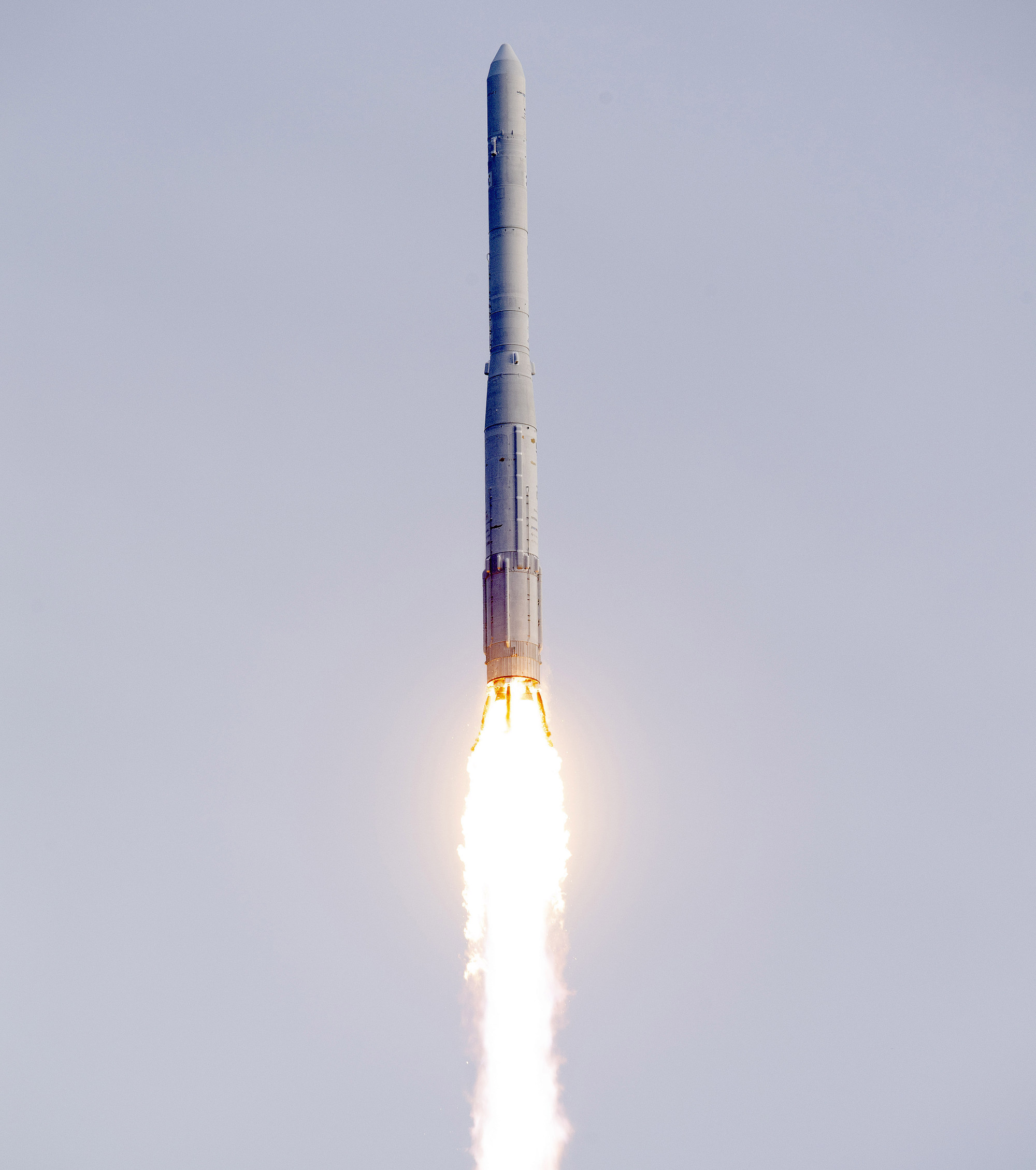
Korean ‘rivalry’ heads to space, as South launches first home-grown rocket and North prepares spy satellite
- Nuri’s mission shows South Korea has ability to send satellites into orbit from a home-grown space vehicle, as previous launches used rockets from other countries
- Nuri’s flight comes as North Korean leader Kim Jong-un called for his country to launch its first spy satellite into orbit to monitor US forces and their allies in Asia
“The third flight of Nuri has been completed successfully,” Science Minister Lee Jong-Ho said.
Payload separation followed and six of eight satellites were confirmed to have been separated successfully as it needed more time to check on the remaining two satellites, the minister said.
The 200-tonne Nuri rocket blasted off from the Naro Space Center at around 6.24pm local time from the Naro Space Center on the country’s south coast, and reached its target orbit of 550km (342 miles) above the surface after about 13 minutes into the flight.
“This launch marks a leap forward for South Korea in its efforts to develop its own aerospace industry,” said Lee Sang-ryul, head of the Korea Aerospace Research Institute (KARI).
Nuri’s third flight marked the first attempt to load and launch a “commercial-grade” satellite with the home-grown launch vehicle, KARI said in a statement.
This flight is aimed at verifying locally-developed, sophisticated radar known as synthetic-aperture radar (SAR) in space, as well as conducting space research missions including measuring cosmic radiations, it said.
SARs are less affected by weather than optical cameras and can be used in the absence of daylight.

Nuri, also known as KSLV-II, performed its maiden flight in October 2021, carrying a 1,500kg dummy satellite payload.
Even though it reached the targeted apex of 700km, it failed to reach an intended orbital velocity as its third stage shut down prematurely.
Last June’s flight, the second involving a domestic space rocket, fared much better by placing a dummy satellite and four miniature satellites called CubeSats into orbit, marking the first time a satellite was launched from South Korea using a home-grown rocket.
KARI said more flights are needed to make Nuri more reliable as a launch vehicle to put locally developed satellites into orbit.
The 2 trillion-won (US$1.52 billion) Nuri project, which began in 2010 will continue until 2027 with three additional rocket launches; a next-generation mid-sized satellite in 2025, five micro satellites in 2026 and another five micro satellites in 2027.
How South Korea cribbed from SpaceX to launch its space ambitions
Lee Il-woo, an analyst at the think tank Korea Defence Network, ruled out the possibility of converting Nuri into military missiles, because unlike ballistic missiles that use solid fuel Nuri is liquid-propelled.
Solid fuel eliminates the need to fuel missiles just before launch, which would increase response time and potentially be spotted by enemies.
“Instead, Nuri allows South Korea to enhance its space reconnaissance capability by building a network of many small satellites at times and places of its own choice in the future”, Lee told This Week in Asia.
South Korea plans to invest an additional 2 trillion won (US$1.5 billion) over the next 10 years to develop another KSLV-III launch vehicle which is expected to come online in 2030 to launch a 1.5-tonne robotic lunar lander by 2032.
South Korea’s National Security Adviser Cho Tae-yong said any potential launch from Pyongyang could lead to further sanctions.
“There’s a chance of a launch in the near future. In such an event … it would end up deepening North Korea’s diplomatic isolation in the international community,” Cho told Yonhap News TV.
Kim visited a Preparatory Committee for the satellite launch last week and approved its “future action plan”, the North’s Korean Central News Agency said, hinting the launch could be imminent.
There’s definitely a rivalry between the two Koreas in terms of what they’re trying to set up in space
If it happens, it would be the North’s first space rocket launch since February 2016 when Pyongyang claimed it had put an earth-observation satellite into orbit despite scepticism abroad.
“There’s definitely a rivalry between the two Koreas in terms of what they’re trying to set up in space,” said military historian David Silbey, director of teaching and learning at Cornell University’s programme in Washington.
“One of the things satellites are used for is targeting nuclear weapons,” Silbey said. “It’s worth being really nervous about North Korea having this kind of high-end capacity.”
The sky’s no limit: US military launches space force in South Korea
While the country is barred by United Nations Security Council resolutions from conducting ballistic missile tests, Pyongyang has long claimed it’s entitled to have a civilian space programme for satellite launches.
Analysts warn that technology derived from North Korea’s space programme could be used to advance its ballistic missile technology.
David Schmerler, a senior research associate at the James Martin Center for Nonproliferation Studies, said if North Korea can successfully launch and place an imaging satellite into orbit, it would use the images to try and refine their targeting list.
“The potential threat from North Korea would notionally remain the same, but with better or more up-to-date imagery, that threat would be more refined – and more effectively deployed – if used,” he said.
Additional reporting by Bloomberg


